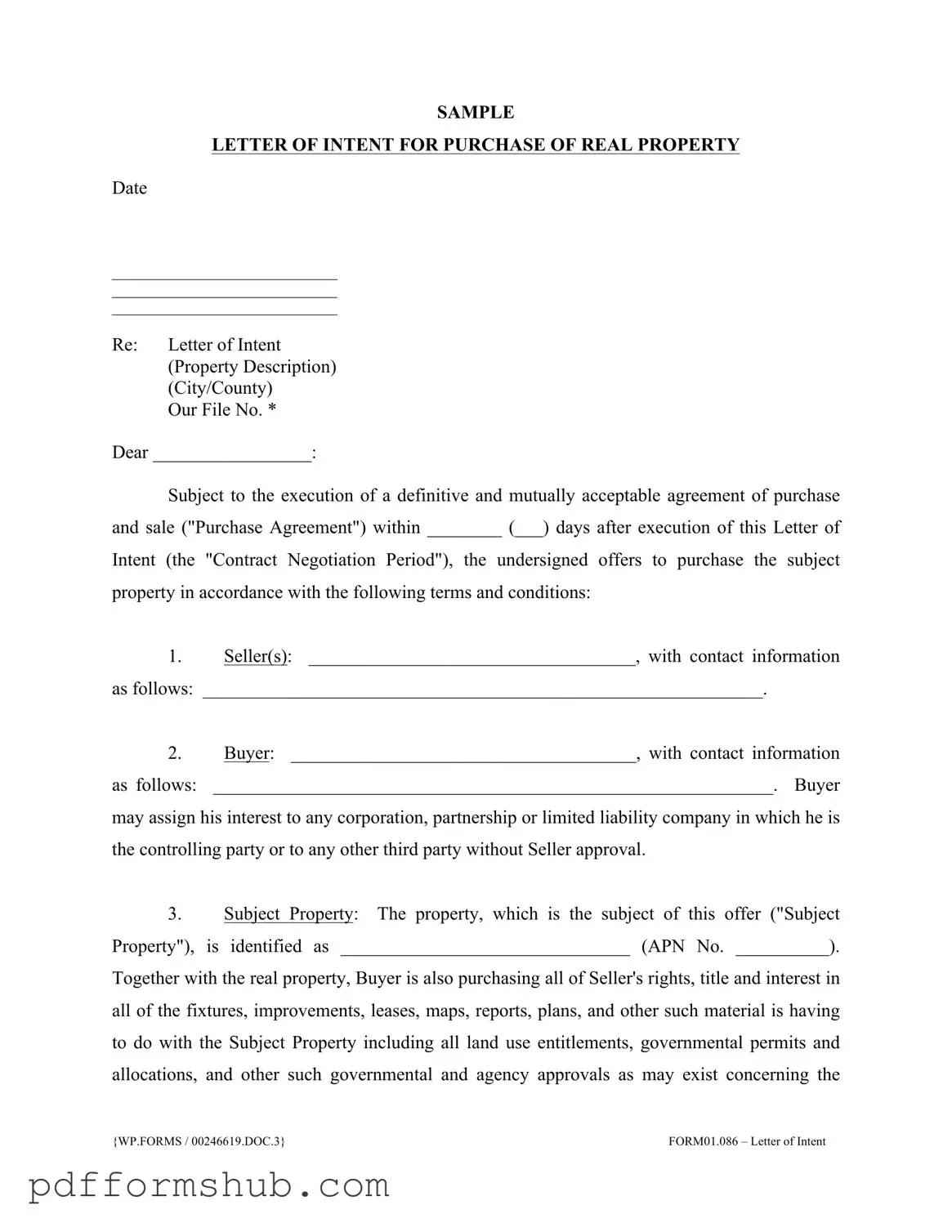The Letter to Purchase Land form serves as a foundational document in real estate transactions, outlining the preliminary terms and intentions of both the buyer and seller regarding the purchase of a specific property. This form is not merely a formal request; it signifies the parties' commitment to negotiate a definitive purchase agreement within a specified timeframe, known as the Contract Negotiation Period. Key components of the form include the identification of the seller and buyer, detailed property descriptions, and the proposed purchase price. Additionally, it stipulates the process for opening escrow, outlines initial and second deposits, and establishes a feasibility period during which the buyer can conduct due diligence on the property. This period is crucial, as it allows the buyer to assess the viability of the purchase and to back out if necessary, without penalty. Furthermore, the form addresses conditions that must be met before closing the escrow, ensuring that the buyer receives clear title to the property. Importantly, the Letter to Purchase Land form is designed to facilitate a transparent negotiation process, while also protecting the interests of both parties until a formal agreement is reached.
